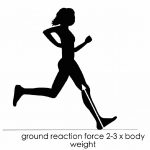Have you got Achilles tendon pain? with Jacob Taylor
The Achilles tendon was named after Achilles, the legendary hero and warrior of tales told long ago, who died as a result of an arrow being shot through the mid-portion of his tendon. And indeed,
still today, the Achilles tendon continues to be a source of pain for many runners, athletes and the average, everyday Aussie. The role of the Achilles is to act as a force transfer device, providing a
attachment for the calf muscles from the leg to the heel bone and transmitting forces up and down from the ground below when we walk. Runners have been found to be at 30 x greater risk of Achilles tendon pain then sedentary individuals. Most of this has to do with technique and training variables, such as time, speed, rest and surface being ran on.
Several key pathologies exist with the Achilles tendon and each pathology requires specific rehab processes. Regarding Achilles region pain, ultrasound and plain-film x-ray are helpful tools in determining the correct diagnosis and in predicting prognosis.
Most commonly:
Mid-portion tendinopathy
o Location of pain – Point tenderness of mid-portion of Achilles – patients can point to
sore point exactly (1 finger width max)
o Most common Achilees tendon pain
o Start-up pain but better with 5-10 mins of activity
o Worse in morning first thing out of bed
o Painful single leg heel raise
Insertional tendinopathy
o Location of pain – between the bottom of the Achilles and top of calcaneum (heel) bone
o Morning stiffness and warming up pattern as per mid-portion tendon pain
o High insertion pain must be differentiated from bursal pain
o On ultrasound – may be associated traction spur (spur may or may not be
symptomatic however)
Retrocalcaneal bursitis
o Location of pain – same as insertional Achilles pain, but more widespread and
irritable with activity and loading
o Ultrasound scans show thickened bursae and significant fluid volume
o Pain common even with low load activities
Paratendonitis
o Location of pain – often localised to the medial or lateral side of the Achilles tendon
o Pain that flares up and is reactive for several days after activity
o Pain often aggravated by low load activities such as heel raises
o Ultrasound scan useful for differential diagnosis
Not to be missed:
Plantaris tendon pain
o Pain medial of the Achilees tendon, usually involve compression of the medial
Achilees tendon by the plantaris tendon
o Quite uncommon but presents similar to mid-portion tendinopathy
o End of range plantar flexion cane aggravate pain
Partial tear of Achilles tendon
o Acute incident of pain onset and acute and major loss of strength
o Look for black hole look on an ultrasound
Accsessory soleus tear
o Location of pain – deep to the Achilles tendon
o Main thing – pain gets worse with activity and does not warm up with activity
o Ultrasound useful for differential diagnosis
Pat pad irritation
o Location of pain – proximal and mid-portion of the Achilles region medially or laterally diffuse pain
o Pain from compression in dorsiflexion
o Dopler ultrasound is useful
If you have Achilees pain, the worst thing you can do is to do nothing about it. If you do nothing, it will probably get worse. Get in touch with your physiotherapist who can help you correctly diagnose your Achilles pain, help address the contributing factors and get you back to pain free running and activity!
Jacob Taylor
Senior Physiotherapist at Pogo Physiotherapy
References:
Barton, C (2014). Achilles tendon differential diagnosis, with Peter Malliaras & Carly Johnson. Available via, http://www.completesportscare.com.au/2014/04/achilles-tendon-differential-diagnosis-peter-malliaras-carly-johnson/.
Brukner, P. D. & Kahn, K (2006). Clinical Sports Medicine (3rd Edition). McGraw Hill, Sydney







